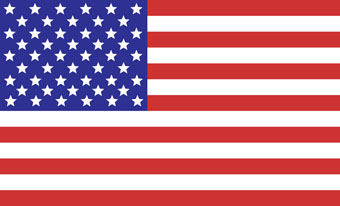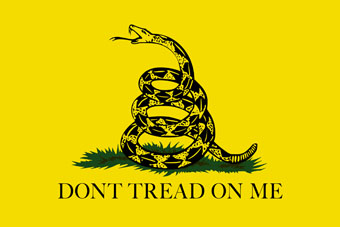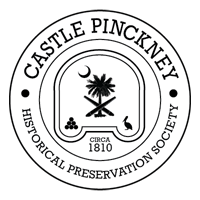
Passengers aboard ships and smaller boats often mistaken the old brick and mortar structure on the small island in Charleston Harbor for Fort Sumter. In fact, some are often puzzled about some of the activities there. This section, The Shute's Folly Beacon, will shed light on activities at Castle Pinckney and the island, Shute's Folly. This section takes its name from the lighthouse that was built at Castle Pinckney in 1855. The fort served as a lighthouse station and depot until 1917.*
Castle Pinckney might be called “Charleston's Silent Sentinel," but it is rarely silent. Coastal birds, including Eastern Brown Pelicans and American Oystercatchers, call Shute's Folly home during the nesting season. Loyal volunteers, called “Castle Guardians," regularly cross the harbor in small boats early in the morning to attack a broad range of activities at the site. Armed with shovels, rakes, pruning shears and other equipment, they usually work to remove trash and to control the thick overgrowth that quickly covers the brick and mortar structure before boarding small boats and returning to the mainland after a day's work.
The Guardians often perform other special tasks, including flag-raising ceremonies, to recognize historic flags and events, and to honor causes.
What Flag Is Flying at Castle Pinckney?
Latest Post in The Shute's Folly Beacon
Aug. 24, 2025: Hibernian Society Member Raises Gadsden Flag at Castle Pinckney


Imagine carrying a large flag, boarding a small boat and traveling to a small island in the center of Charleston Harbor. Then imagine disembarking at the island, and walking across a marsh to an abandoned 215-year-old fort.
Your mission is to unlock the fort’s front entrance, enter and walk to the top of the fort to conduct a flag raising ceremony.
Castle Guardians, loyal volunteers, regularly do this. John Mahoney, one such Guardian, led members of the Hibernians Society of Charleston to Castle Pinckney at 6 p.m. on Sunday, August 24 to conduct the latest flag ceremony – to lower one flag and raise a new one atop the tall flag pole erected inside the fort. More
Previous Posts
Previous posts are stored (archived) in the depot.
*More on the Lighthouse at Castle Pinckney -- A yellow lightouse tower with a focal plane of 50 feet was built at Castle Pinckney in 1855 prior to the Civil War. The lighthouse, shown in the engraving published in 1861 by Harper's Weekly shortly after the war began (see engraving), had a 5th order, non-rotating Fresnel lens that permitted its light to be visible at a great distance. Castle Pinckney was transferred to the Lighthouse Board in 1878 for use as a lighthouse depot for the Sixth District, serving lighthouses from North Carolina to Florida. A new lighthouse was built at Castle Pinckney in 1880, and a third lighthouse was built to replace it in 1890 when the fort became a lighthouse station. A lighthouse depot was situated on Tradd Street in Charleston in 1916, and the lighthouse station at Castle Pinckney was deactivated in 1917.

